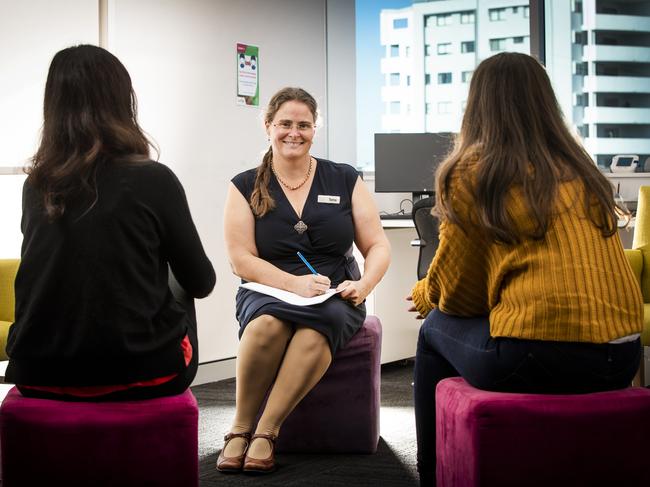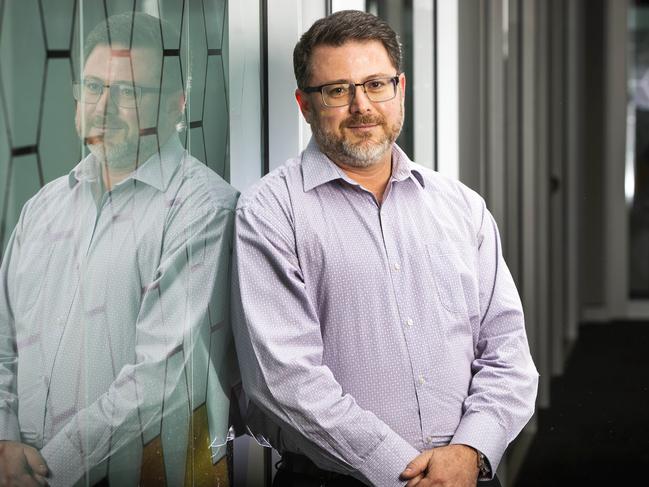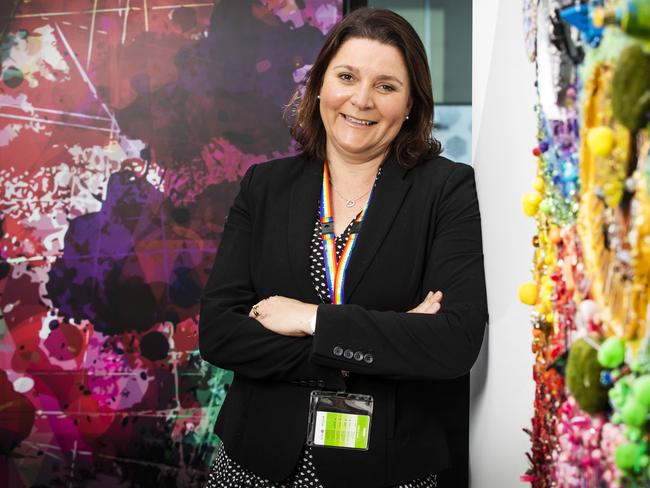Qld teen eating disorders exacerbated by secret clubs
“No-eating clubs” in Queensland schools are part of a dangerous escalation of eating disorders among the state’s young people.

QWeekend
Don't miss out on the headlines from QWeekend. Followed categories will be added to My News.
Dangerous “no-eating clubs’’ at Queensland primary schools are part of a horrifying escalation in childhood and adolescent eating disorders.
Kids as young as seven are presenting with the life-threatening psychiatric disorder, with a fourfold increase in all cases since June 2020.
Experts say the worldwide Covid-19 pandemic has highlighted an alarming “true prevalence” of eating disorders as parents have been more present with lockdowns and working from home to see “what’s really going on’’ with their children.
Child and adolescent psychiatrist Salvatore Catania is the medical director of Children’s Health Queensland Hospital and Health Service’s specialist Eating Disorders Program – the largest public eating disorders service in Australia.
He said an increasing trend in eating disorder cases had been “turbocharged’’ since Covid-19.
“This is a national and international trend where the caseloads have increased markedly,’’ he said.
“Eating disorders are a covert and secretive type of illness and parents just didn’t see things.
“We are seeing more of this true prevalence because parents have been home more.’’

Dr Catania said there were likely just as many undiagnosed cases as there were children in treatment.
There are currently about 120 active cases with the Queensland Children’s Hospital reporting a consistently full ward of cases for many months. There are also more children with the disorder admitted to mental health wards and others receiving treatment in non-government organisations and the private sector.
The number of boys diagnosed with anorexia nervosa has also markedly increased over the past decade, increasing from about one in 20 cases, up to about one in five.
The disorder can be lifelong but recovery is possible, dependent on early diagnosis and treatment.
“It’s hard to determine the true prevalence of eating disorders … it’s not like we can do a blood or screening test,’’ Dr Catania said.
“There are more cases in the broader CYMHS (Child and Youth Mental Health Service) system as well. We could certainly have another 100 kids on our case books if we had capacity to take them.’’
In some cases, Covid escalated the disorder because there was less access to preferred food choices, brands and stores where perceived “safe foods’’ could be purchased, as well as changed exercise habits, heightened anxiety and increased social media use.

Well-meaning educational health programs taught at schools have also come under scrutiny.
With a strong focus in recent years on the harmful effects of obesity, Dr Catania said children were being asked to measure their BMI (body mass index), their weight, keep food diaries and even do skinfold tests to determine body fat percentage in front of their classmates.
For some kids, this has led to obsessive food behaviour.
Social media also contributed to “immense peer pressure” in the schoolyard to be slim with fat shaming and bullying common.
“There are ‘no-eating groups’ at schools,’’ Dr Catania said.
“We’ve had primary-school-aged kids that talk about these clubs where they deliberately don’t eat at school. Particularly in high school, it’s become cool not to eat at all at school. The peer pressure is immense.
“We are seeing a lot of larger-framed kids who are fat shamed or bullied.
“Higher-weighted kids particularly get into trouble and they can lose a tremendous amount of weight really quickly and they get really sick. The record has been a teenager who has lost 50kg in six months.’’

DEADLY ILLNESS
Eating disorders come with grim statistics – the rate of suicide of someone with an eating disorder is six to 12 times higher than the normal population.
It is the number one reason kids and adolescents with an eating disorder die, followed by medical complications that can include brittle bones, fertility and cardiac problems caused by growing bodies going into a “starvation state”.
Queensland children as young as 10 are developing osteopenia – a precursor to osteoporosis. Girls commonly stop menstruating, causing future risk to their fertility.
Eating disorder researchers have also performed brain scans that show the brain physically shrinks in size. There can be cognition, cognitive capacity and personality changes.
There has also been a “significant trend’’ of transgender kids who develop eating disorders because they want to stop their bodies going through puberty.
“Kids can die from eating disorders,” Dr Catania said.
“Depression, bipolar and schizophrenia get all the headlines but eating disorders, particularly anorexia, is the most lethal across the lifespan of all psychiatric illnesses. There is a huge period of growth in adolescence for boys and girls so the dietary requirements go through the roof.
“In a starved state, your body has to cannibalise itself and eat its own muscle and bone to keep going. You can’t repair that sort of damage.
“They are often so starved, particularly with anorexia, that their brain is cognitively not able to function logically at all. They can’t just eat. We are talking about kids who quibble over bits and pieces of lettuce. They are in ICU in hospital and they are still saying ‘I’m fine, I’m fat’.
“Most kids we see are 14 to 15-year-olds but we are getting a lot of seven and eight-year-olds now.
“I’m constantly amazed at what I hear and see. It is extremely horrifying.’’

A PARENT’S CRISIS
Victoria Brown has experienced the trauma of an eating disorder after her daughter was diagnosed with anorexia in October 2017 at age 14.
Brown now works as a carer consultant for the Eating Disorders Program. Her daughter underwent 15 months of family-based therapy and worked with nutritionists and psychiatrists and took many more months to reach recovery.
Ms Brown admitted she had “no idea’’ her daughter was suffering.
“Anorexia is such a highly manipulative disorder … they are able to cover things up and project that everything is normal,’’ she said.
“When she was diagnosed, she was in a fog, she was agitated, she was moody. In her eyes, there was just so much sadness. She admitted to restricting her eating. She would say, ‘I’ll have breakfast when I get to school’, then she would throw out her lunch. She would eat a good dinner but then have a shower and purge. I was devastated to find out. You are frightened ... overwhelmed, you realise this is not a broken arm you can fix in weeks, this is a serious condition that needs a long-term treatment. I had very little understanding of what anorexia was.’’
Ms Brown quit her job to care for her daughter, who is now 18, attending university and doing well.
“It’s really tough to be a teenager these days,’’ Ms Brown said.
“Everyone is putting their best looks out there with filters and creating a perfect image.’’
NEED HELP?
Kids Helpline 1800 55 1800
Lifeline 13 11 14
Butterfly Foundation
1800 ED HOPE (1800 33 4673)




